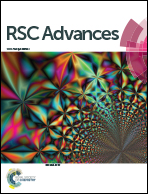Oxidative dehydrogenation of n-butane to butenes on Mo-doped VMgO catalysts
Abstract
VMgO catalysts with different molybdenum doping amounts were prepared by an impregnation method. The structure, specific surface area, and basic and redox properties of these catalysts were determined by XRD, BET, CO2-TPD, and H2-TPR. The XRD results revealed that all catalysts contained an orthovanadate phase (Mg3(VO4)2), while no metavanadate and pyrovanadate phases were detected. BET surface area analysis showed that the Mo-doped catalysts possessed lower surface areas than the undoped one. The reducing and basicity properties of the catalysts were characterized by H2-TPR and CO2-TPD measurements, which demonstrated that Mo-doping improved the redox temperature and reduced the number of basic sites. The performances of these catalysts were investigated at different C4H10/O2 molar ratios, temperatures, and contact times. The Mo-doping not only improved the selectivity of butenes but also inhibited the deep oxidation reactions, although cracking reactions occurred with high levels of Mo doping. When the Mo/V atomic ratio was 3 : 100, n-butane conversion of 34.5% and total butene selectivity of 79.3% were achieved at 630 °C. To the best of our knowledge, the oxidative dehydrogenation performance of the synthesized Mo-doped VMgO catalysts described in this work represents a remarkable improvement compared to previous reports.



 Please wait while we load your content...
Please wait while we load your content...